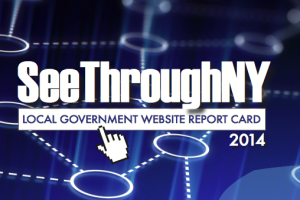85% of NY Local Govt Websites Get “F”

A stunning 85% of the 500 New York State local government websites rated by the Empire Center got an “F” for failing to provide basic information and being hard to use. The poor grades look especially grim when you consider that Empire Center looked only at websites belonging to the largest and most well funded local governments. (NYS has 3,453 units of local government according to the Census.)
Empire’s review – by far the largest of its kind ever done in NY – graded cities, counties, towns, villages, and school districts on the information they provided in ten areas:
- Contact information
- Public Meetings
- Public Information
- Budgets
- Financial Reports
- Contracts
- Taxes and Fees
- Facilities and Services
- Expenditures
- Ease of Navigation
The website review is particularly effective because the categories of information Empire created are clear, logical, and fair. While the overall picture the report paints is dismal, some localities did well. The best-performing sites belonged to Southern Tier’s Schuyler County, New York City, the Town of Wilton in the Capital Region, the Town of Penfield in the Finger Lakes and the Clarkstown Central School District in the Mid-Hudson valley.
The best-performing categories were Public Meetings with a 79% passage rate, Taxes with 64%, and Budgets with a 63% pass rate. Disappointingly, 99% of sites failed to publish adequate information about contracts and 81% failed to provide basic information about making Freedom of Information Law requests; and 72% failed in the softball Ease of Navigation category.
As explained in the report:
Except for a small—but notable—group of outliers, local governments and school districts are not providing clear or comprehensive or even the most basic information on their websites. What could and should be useful, powerful tools for taxpayers are very much underutilized. Earning a passing score on the 10-point transparency checklist is not an unreachable goal, even for those entities that failed on the first go round. A website would earn a nearly passing 62 percent by simply posting the documents as outlined in the checklist.
The Empire Center undertook this project not to place blame on any individual local government, rather to highlight the need for advancement in how and when data and information is presented on websites. With no real guidance for what makes a good website, the SeeThrough Government Rankings should provide a basis and a benchmark by which local governments can see how websites stack up from one municipality to the next.
